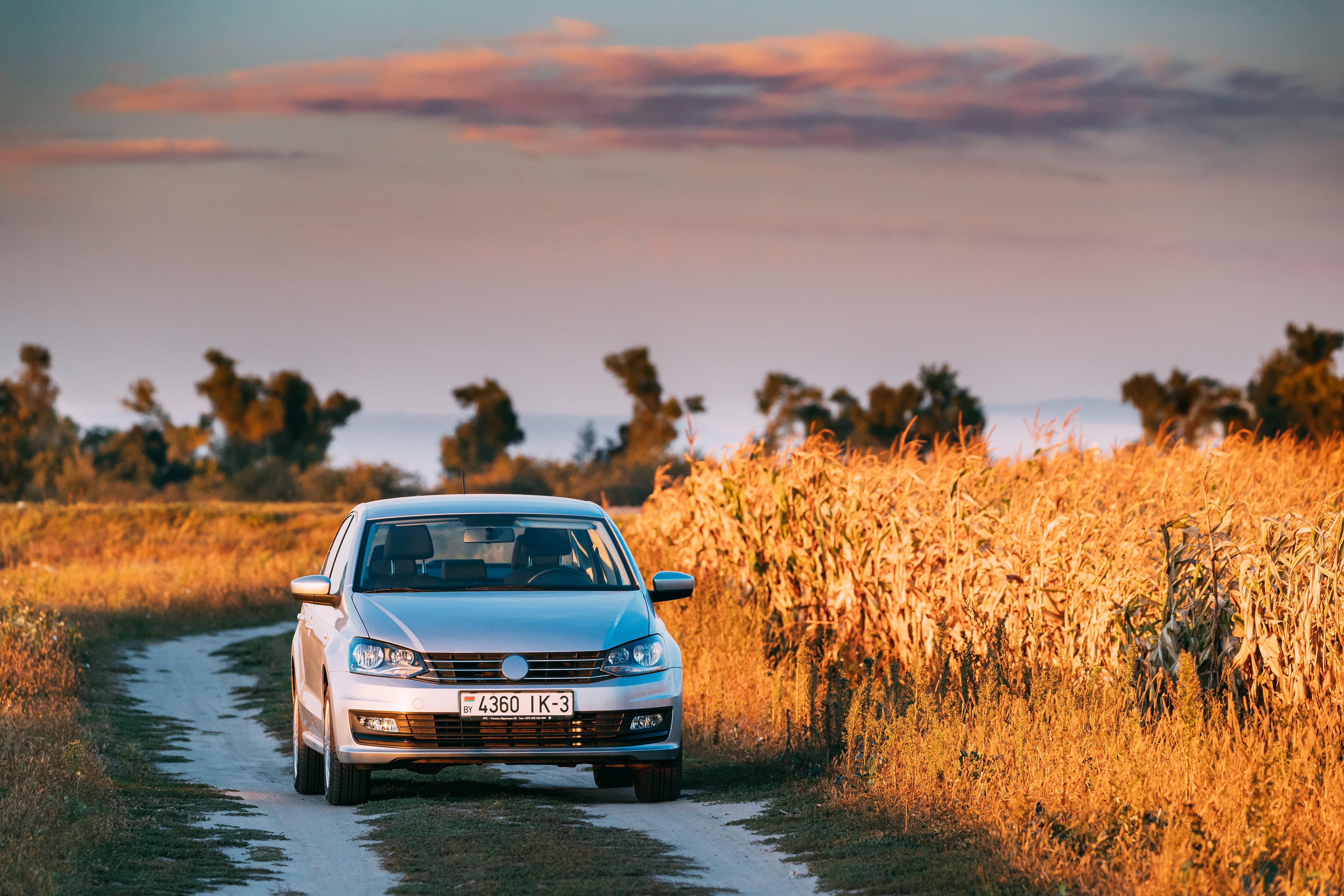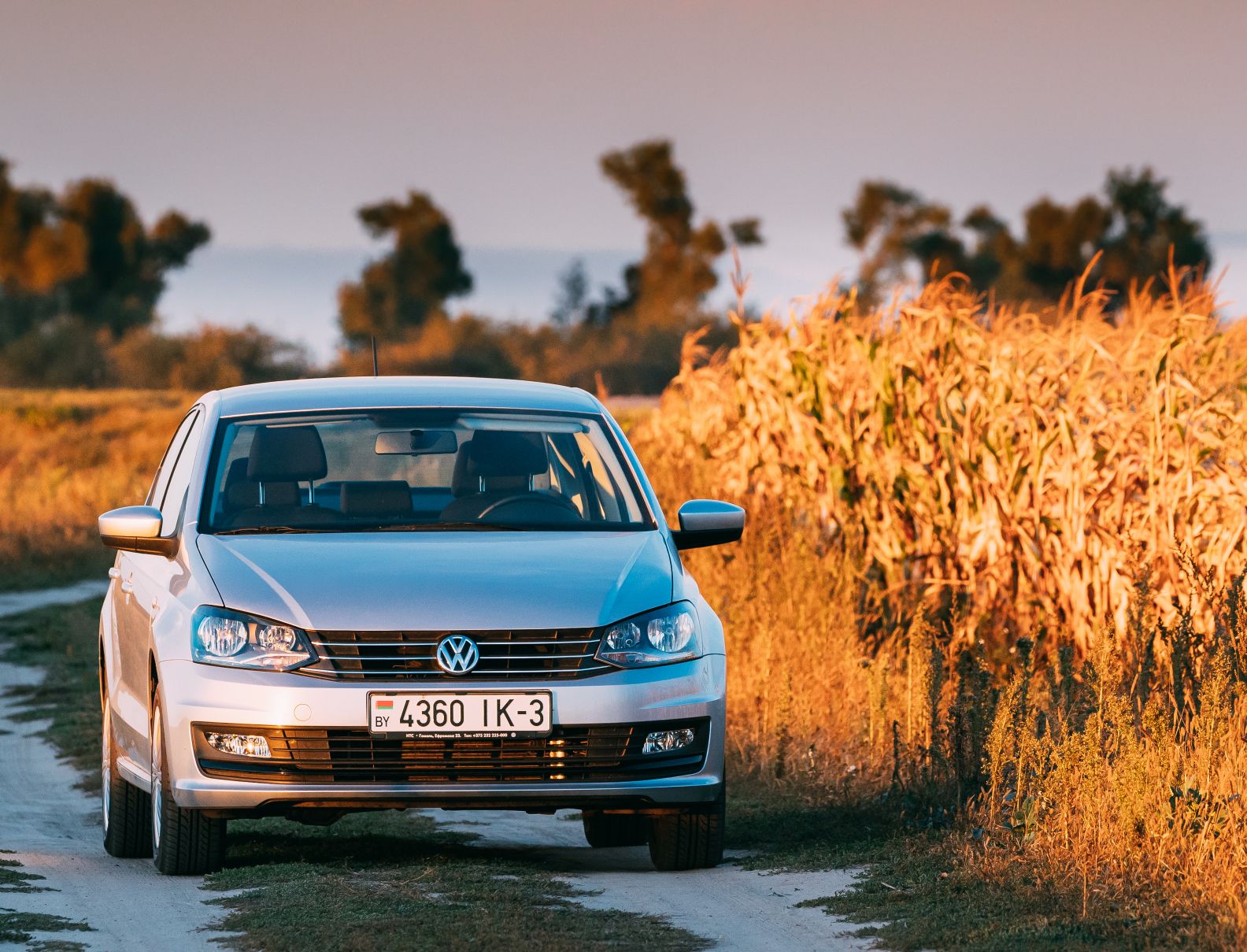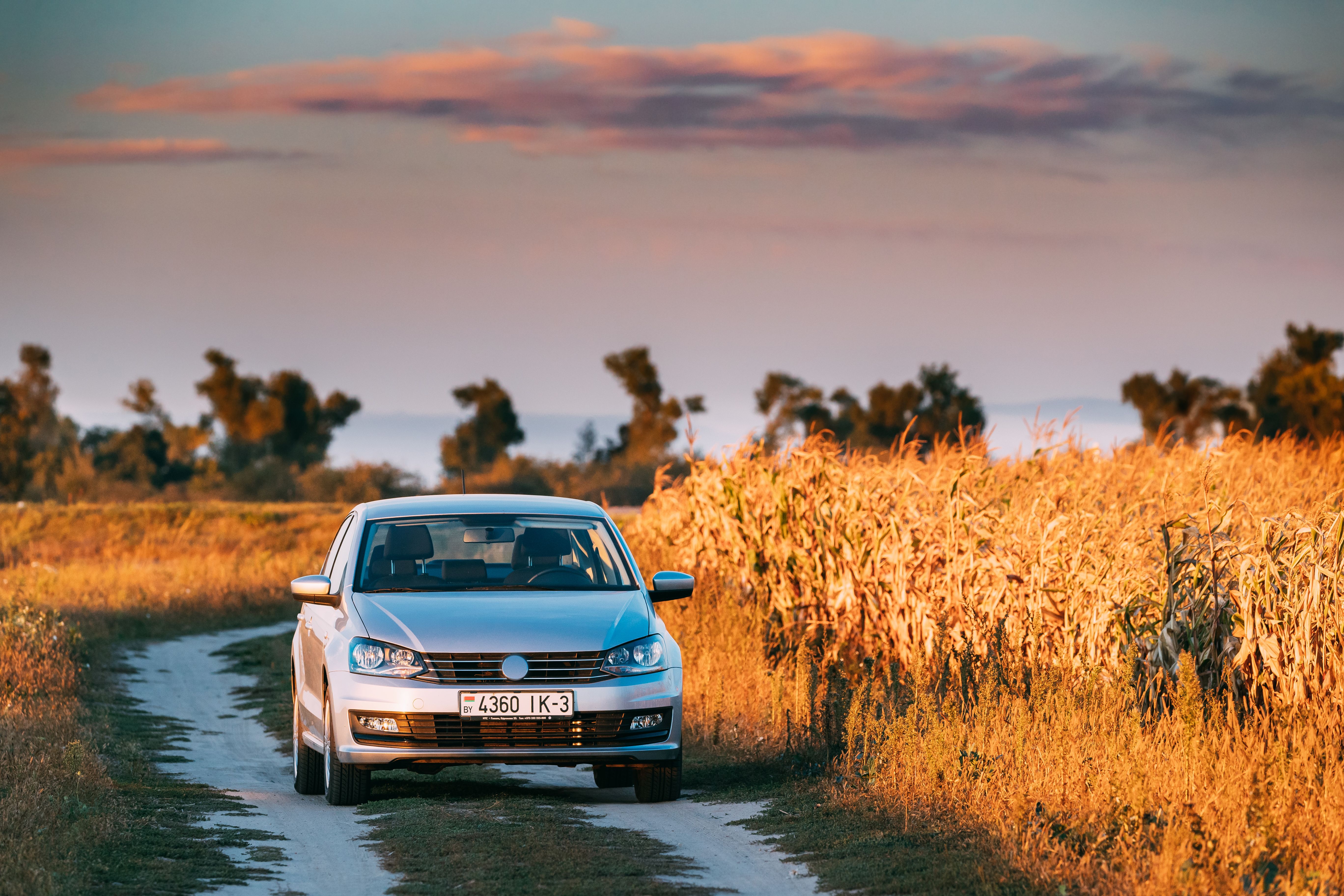Bumper-to-Bumper Car Insurance
Bumper-to-Bumper Car Insurance
Bumper-to-bumper insurance, also known as zero depreciation or nil depreciation cover, is a valuable add-on that can be purchased alongside your comprehensive car insurance policy to enhance coverage.
This add-on ensures you receive the full claim amount without any deduction for the depreciated value of your car or its parts, making it an ideal solution for lowering out-of-pocket expenses.
It is a great add-on for new car owners, luxury vehicle owners, and inexperienced drivers, as it helps maintain the car's optimum condition. In this guide, we will learn in detail about bumper-to-bumper insurance meaning, its working benefits, the claim process and more.
Car Insurance Add-on Covers
Ways to Find Car Insurance Policy Number
What is Bumper-to-Bumper Car Insurance?
Bumper-to-bumper insurance coverage is a voluntary add-on that is typically included with a comprehensive car insurance plan. The purpose of the add-on is to enable vehicle owners to receive full compensation without any deduction for the depreciation of vehicle parts.
With this add-on, vehicle owners get comprehensive protection for rubber, fibre, plastic, nylon, and metal parts of their vehicle. It covers accident damage, fire damage, natural disasters, riots, and theft without depreciation deductions. Vehicle owners only need to pay compulsory deductibles while the insurance provider handles the rest.
Also Read: Zero Depreciation in Car Insurance
Benefits of Bumper-to-Bumper Car Insurance
A bumper-to-bumper coverage in a car insurance provides full coverage for various vehicle parts, without depreciation deductions, making it an essential add-on for comprehensive protection. Here are some of the benefits of including this add-on in a comprehensive car insurance plan.
Complete Car Protection
Bumper-to-bumper car insurance offers complete protection for vehicles, with no deduction for depreciated parts. It helps in receiving the 100% claim settlement amount, minus any deductible. Generally, the standard policies deduct 30-50% depreciation on plastic, rubber, fibre, and glass components, but this add-on covers the full replacement cost.
Comprehensive Parts Coverage
Bumper-to-bumper insurance offers one of the most extensive protections for your car. It covers almost every visible component, including rubber parts, plastic fittings, fibre panels, metal bodywork, and even glass. From bumpers, mirrors, and lights to body panels and other external parts, everything is repaired or replaced without factoring in depreciation.
Enhanced Car Resale Value
Another benefit of this add-on with car insurance is enhanced car resale value. Since repairs and replacements of cars are covered without depreciation, external parts like bumpers, mirrors, and lights remain well-maintained. This not only reduces long-term maintenance expenses but also keeps your car looking newer, ultimately increasing its resale value when you plan to sell.
Financial Advantage
With bumper-to-bumper add-ons with comprehensive car insurance plans, vehicle owners avoid the financial burden of paying depreciation amounts during claims. Unlike standard policy, where depreciation is deducted, this add-on offers higher claim payouts. This is particularly beneficial for luxury vehicle repairs, where repair costs are very high.
Car Depreciation Sets By IRDAI
The Indian Motor Tariff sets the depreciation rate. It is a fixed percentage applied to different car parts and components. Insurance companies typically consider this depreciation percentage when settling claims. Here is the car depreciation rate per year:
Depreciation Rate Based on Vehicle Age
| Age of Vehicle | Depreciation Rate (%) |
|---|---|
| Up to 6 months | 5% |
| 6 months to 1 year | 15% |
| 1 year to 2 years | 20% |
| 2 years to 3 years | 30% |
| 3 years to 4 years | 40% |
| 4 years to 5 years | 50% |
| Above 5 years | Mutually decided |
Depreciation Rates for Different Car Parts and Components
| Car Component Group | Depreciation Rate (%) |
|---|---|
| Rubber, Nylon, Plastic parts, Tyres, Tubes, Batteries, Airbags | 50% |
| Glass components | 0% |
| Fiberglass components | 30% |
| Metallic parts | Varies by vehicle age: |
| 6 months to 1 year: | 5% |
| 1 to 2 years: | 10% |
| 2 to 3 years: | 15% |
| 3 to 4 years | 25% |
| 4 to 5 years | 35% |
| 5 to 10 years | 40% |
| - Above 10 years: | 50% |
| Paintwork | 50% |
Also Read: Car Spare Parts Insurance
TATA AIG Car Insurance Policy with Bumper to Bumper Add-on
TATA AIG offers a bumper-to-bumper add-on with the comprehensive car insurance policy. The add-on helps negate depreciation on car parts at the time of claim, allowing for a full claim settlement amount.
In simple terms, TATA AIG will pay the amount of depreciation deducted from the value of the
parts replaced under its own damage claim, lodged under Section 1 (Own Damage) of the policy.
Under the bumper-to-bumper car insurance cover, vehicle owners can receive compensation for depreciable vehicle parts for the first 2 claims reported to us during the policy tenure. However, policyholders need to have their vehicle repaired at authorised network garages, workstations, and service stations.
Key features of Comprehensive Car Insurance with Bumper to Bumper Add-on
| Key Features | Benefits |
|---|---|
| Car Insurance Premium | Starts at ₹2,094 |
| Coverage | Coverage for nylon, rubber, plastic and fibreglass components. |
| Claim Limits | 2 claims during the policy tenure for bumper-to-bumper add-on |
| Applicable Car Age | The cover is valid for new cars or cars within the age of 5 years |
| No Claim Bonus | Up to 50% discount after 5 claim-free years. |
| Cashless Garages | 5900+ Cashless Garages |
| Claim Assistance | 750+ experts for fast, easy claims. |
How Bumper-to-Bumper in Car Insurance Works?
The working of bumper-to-bumper insurance coverage is simple. When you file a claim for accident damage, the insurance provider pays the full repair or replacement cost without deducting any depreciation value from your car parts.
In regular comprehensive insurance, insurance providers generally deduct depreciation based on your car's age and the specific parts damaged.
For example, plastic and rubber parts typically face a 50% depreciation rate, while metal parts experience varying rates, ranging from 5% to 50%, depending on the vehicle's age and condition. With bumper-to-bumper coverage, this depreciation deduction is eliminated, meaning you receive 100% of the repair costs.
Let us understand bumper-to-bumper car insurance by example. Mohan was involved in a minor accident, during which the car's bumper and fibreglass parts were damaged. The repair and replacement cost of such damages is ₹20,000.
If Mohan had only regular comprehensive insurance, the insurer would deduct depreciation from his claim amount, typically 50% for plastic and fibreglass components like bumpers, based on the car's age, meaning he would receive only ₹10,000 and pay ₹10,000 out of pocket.
However, with bumper-to-bumper coverage, Mohan receives the complete ₹20,000 repair cost without any depreciation deduction.
Bumper to Bumper Insurance Coverage: Inclusion and Exclusion
| Bumper to Bumper Inclusion | Bumper to Bumper Exclusion |
|---|---|
|
Third-party Claim: The bumper-to-bumper car insurance coverage only covers damage to the vehicle itself, not any damage to third parties or their property. Driving Under Influence: If you are found to drive your car under the influence of an intoxicating substance like alcohol, a drug, etc, then it is not covered under the plan. Misuse of the Vehicle: If the damage and loss to the vehicle result from misuse, such as involvement in illegal activities or using a personal vehicle for commercial purposes, then it will not be covered under the plan. Exclusions for Certain Parts: The add-on does not offer coverage for parts that are not mentioned in the policy terms and conditions. |
Disclaimer: Refer to the policy document for the exact information.
Factors to Consider While Buying Bumper-to-Bumper Insurance Coverage
When it comes to buying car insurance, full coverage, including a bumper-to-bumper add-on, is a smart decision. However, there are certain factors to keep in mind while buying a car insurance policy with a bumper-to-bumper add-on.
Age of Vehicle
When purchasing comprehensive car insurance with a bumper add-on, the first thing to consider is the vehicle's age. The bumper-to-bumper add-on is usually for new car owners. The age limit for vehicles may vary among insurance providers. The TATA AIG bumper-to-bumper cover is typically available for cars up to 5 years old.
Claim Limit
Another thing to consider when purchasing a comprehensive car insurance policy with bumper-to-bumper coverage is the claim limit. Typically, the claim limit refers to the number of claims permitted under bumper-to-bumper coverage during the policy tenure. It may vary from insurance provider to provider. We at TATA AIG offer 2 claims during the policy period.
Terms and Conditions
Understanding a car insurance policy with bumper-to-bumper coverage is crucial to effectively enjoying its benefits. It is best to learn about the policy's inclusion, exclusion, and claim process before purchasing a plan. At TATA AG, we provide detailed documentation of the policy, which customers can go through.
Cost or Premium
Since it is a voluntary add-on available with a car insurance plan, it will enhance the car insurance premium. That is why considering the cost and premium of the car insurance is also crucial before purchasing a plan. We at TATA AIG offer bumper-to-bumper comprehensive car insurance plans with marginally increased premiums.
How to Buy and Renew TATA AIG Car Insurance with Bumper to Bumper Add-on?
Buy Car Insurance with Bumper to Bumper Add-on
- Browse the TATA AIG website, navigate to the "Personal" tab and click on "Car Insurance" under the Motor Insurance section.
- Fill in the car details, such as registration number, make, model, variant, and other required information, then click the "Submit" button.
- Browse through the various car insurance options available and select the plan that best suits your needs.
- Select the bumper-to-bumper add-on from the available add-on options to enhance your coverage.
- Complete the purchase by making a payment using your preferred method, such as credit card, debit card, or net banking.
After successful payment, the car insurance policy with bumper-to-bumper add-on will be sent directly to your registered email address.
Renew Car Insurance with Bumper to Bumper Add-on
- Visit the TATA AIG car insurance page and click on the "Renew your existing policy" option.
- Enter your existing car insurance policy details, such as the policy number and vehicle registration number.
- Review your current plan carefully and include the bumper-to-bumper add-on if it was part of your existing plan, or add it if needed.
- Verify and update your personal details, including name, email address, and other relevant information, before proceeding.
- Complete the renewal by making a payment through your preferred payment method.
- Once the payment is processed successfully, your renewed car insurance policy with bumper-to-bumper coverage will be sent directly to the email address you provided.
Factors Affecting the Bumper-to-Bumper Insurance Cost
Several factors influence the cost of bumper-to-bumper car insurance. Here’s a quick breakdown to help you understand what affects your premium:
Age of Vehicle
New cars have lower premiums because they have a higher Insured Declared Value (IDV) and lower breakdown risks. As your car ages, its IDV decreases, resulting in a lower premium and a reduced maximum claim amount. Vehicles over five years old may not be eligible for this add-on.
Location of Vehicle Owner
Where you live impacts your premium. Metro cities like Mumbai, Delhi, and Bangalore typically have higher premiums due to a higher incidence of accidents, theft, and costly repairs compared to smaller towns or rural areas.
Model and Make of Vehicle
Luxury, sports, or expensive cars have higher premiums due to the cost of spare parts and specialised repairs. Insurers consider the price of parts, the complexity of repairs, and the car’s vulnerabilities when setting the premium.
Insured Declared Value (IDV)
The IDV is the current market value of your car. A higher IDV means a higher premium, as it represents the maximum claim amount the insurer will pay.
Claim History and No Claim Bonus (NCB)
Your claim history matters. Multiple claims can increase your premium. On the other hand, a No Claim Bonus (NCB) earned from claim-free years gives you a discount, lowering your premium.
Vehicle Usage and Registration Type
Commercial vehicles, which are used for business purposes, attract higher premiums due to their higher risk. The location where your car is registered may also affect the premium due to regional risk factors.
How to File a Bumper-to-Bumper Car Insurance Claim?
Cashless Claims
- Contact TATA AIG immediately to report the incident through multiple channels, including the self-service portal, or helpline numbers (02264898282).
- Locate and take your vehicle to an authorised network garage from TATA AIG's approved list of over 5,900+ garages across India.
- Submit your policy details and required documents to the network garage representatives to initiate the cashless repair process.
- Wait for TATA AIG to assign a surveyor who will inspect your vehicle for damage assessment and document verification.
- Once approved, the network garage will initiate the repair process.
- After the repair, TATA AIG will directly settle the approved repair bill with the network garage.
Reimbursement Claims
- Notify TATA AIG representatives about the incident through our official self-service portal, or through helpline number (02264898282)
- Take your vehicle to any garage of your choice and pay the repair expenses upfront.
- Collect all necessary documents from the garage, including detailed repair bills, invoices, and other documents.
- File your reimbursement claim on the TATA AIG official website and submit all required documentation.
- The representatives will review your claim submission, verify all submitted documents, and assess your eligibility.
- Upon approval, TATA AIG will process your reimbursement claim. With bumper-to-bumper add-on coverage, you'll receive full compensation for covered parts.
Also Read: Car Insurance Claim Process
Documents Required for Bumper-to-Bumper Car Insurance Claim
Here is the list of documents the policyholder needs to submit while filing a claim:
- Duly signed and filled claim form
- Copy of vehicle registration certificate
- Copy of driving licence
- First information report in case of theft and accident
- Original repair bills and invoices
- Any additional documents requested by the insurance provider.
Bumper-To-Bumper Car Insurance vs Comprehensive Car Insurance
| Parameter | Bumper to Bumper Car Insurance | Comprehensive Car Insurance |
|---|---|---|
| Nature | A Bumper to Bumper Car Insurance cover is an add-on car insurance cover . | A Comprehensive Car Insurance Policy is available in the form of a standalone car insurance policy. |
| Coverage | This cover encompasses a 100 percent zero depreciation cover for your car, complementing your base car insurance policy. | This policy provides extensive coverage to your car, including damages caused by fire, natural calamities, man-made disasters, accidents, transit, and total loss resulting from theft. You can add certain add-ons to it, including a Bumper to Bumper cover. |
| Depreciation | The selection of this cover enables you to receive the full claim amount for the repair or replacement of your car's components. | The selection of this policy enables you to have comprehensive financial protection for your car, including a Personal Accident Cover to the tune of ₹15 lakhs for the owner-driver. However, the claim amount you receive for the damages caused to your car includes a deduction for depreciation. |
| Premium | The premium for the insurance policy of your car gets slightly enhanced by the addition of a Bumper to Bumper cover. | The premium for a comprehensive car insurance policy is slightly lower without the addition of a Bumper to Bumper cover |
| Eligibility | Any cars older than five years are not eligible to be covered by this car insurance add-on. | Cars of all ages, old and new alike, are eligible to be covered by a comprehensive car insurance policy |
| Purchase | You can purchase a Bumper to Bumper Car Insurance add-on with a Standalone Own Damage Car Insurance Policy or a Comprehensive Car Insurance Policy. This cover cannot be purchased on a standalone basis. | A Comprehensive Car Insurance Policy can be purchased on a standalone basis |
| Number of claims permissible | A Bumper to Bumper Cover is only applicable for the first two claims filed during the tenure of a particular car insurance policy. | There is no limit on the number of claims that can be filed against a Comprehensive Car Insurance Policy during the policy's tenure. |
Key Takeaway
The bumper-to-bumper add-on in car insurance helps in saving money on hefty repair bills. The add-on will provide coverage for depreciable car parts, reducing out-of-pocket expenses. With this add-on to a car insurance policy, policyholders can receive a higher compensation amount at the
time of claim settlement.
If you want to buy car insurance online with a bumper-to-bumper add-on, TATA AIG stands out as an excellent choice. We offer bumper-to-bumper coverage with our comprehensive car insurance plan, which helps save a substantial amount of money on costly car repairs.
With our extensive network of cashless garages, it is easy for policyholders to get bumper-to-bumper repairs done efficiently. Along with this, we also offer various other add-ons with comprehensive car insurance, such as engine security, tyre security, roadside assistance, and more, to enhance the car coverage.
With our easy buying and renewing process, you can buy a car insurance policy in just a couple of minutes. Get your car secured with a TATA comprehensive car insurance policy with a bumper-to-bumper add-on.
Some Helpful Documents

Disclaimer / TnC
Your policy is subjected to terms and conditions & inclusions and exclusions mentioned in your policy wording. Please go through the documents carefully.


